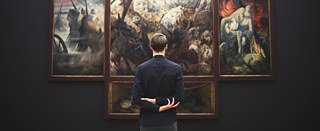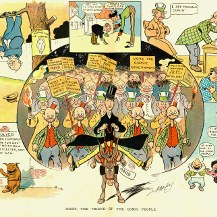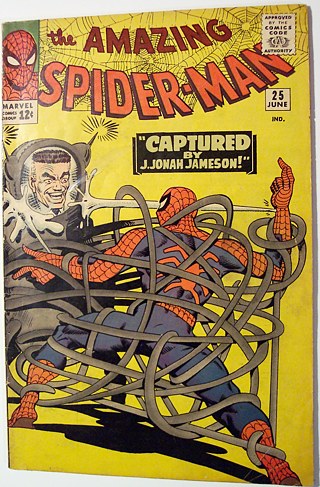The Elite in the Arts | Literature
The Comic's Story

American comic developed during the nineteenth century and peaked in the late 1940s, when stars like Superman were born. Its popularity went up and down like a rollercoaster until its bumpy path arrived at a new medium, the graphic novel.
At the start of the 1900s, popular prints and caricatures had just a few years earlier evolved into the modern comic with sequential images placed in panels and comic characters speaking in speech bubbles. The new popular characters on the comic pages, like the Katzenjammer Kids, would return with new episodes every week. These new creations first appeared in the Sunday color supplements of major newspapers in the United States and were syndicated on a daily basis all across the globe.

With the advent of Superman in 1938, the comic industry gained a unique identity that allowed it to flourish into a mass medium that would influence radio, television and the movies.
The enormous expansion of the comic book industry through the 1940s fell into a sudden and irreversible decline in 1952 with a series of catastrophic events. The first was the growing anti-comic crusades led by Fredric Wertham; the second was the collapse of the comic book distribution system; and the last was the advent of television.
As the popularity of comics waned, the elite art world became enthralled with the Pop Art paintings of Roy Lichtenstein, featuring comic characters painted in garish colors and exaggerated Ben-day dots that highlighted the absurd spectacle of the comics.
In the late 1960s, a growing number of independent publishers created an opportunity for a new movement in underground comics that were decidedly more adult-oriented content. The Marvel Comics publisher was able to reverse its steep decline by appealing to male college-age readers with its new collection of “wounded” superheroes, such as Spiderman and the X-Men.

The appearance of Maus by Art Spiegelman in 1992, published by Pantheon Books, changed the status of the comics. Maus was called a graphic novel, and its critical success eventually ushered in a wide array of new graphic novels sold in bookstores that appealed to an elite audience and received critical acclaim in the literary world. This new generation of comic artists who made graphic novels defined themselves as artists who made comics.
To the Overview